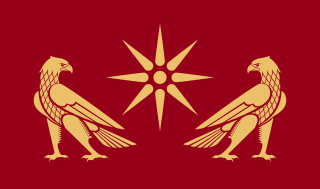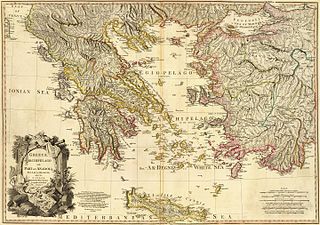 W
WAnatolians were Indo-European peoples of the Near East identified by their use of the Anatolian languages. These peoples were among the oldest Indo-European ethnolinguistic groups, one of the most archaic, because Anatolians were the first or among the first branches of Indo-European peoples to separate from the initial Proto-Indo-European community that gave origin to the individual Indo-European peoples.
 W
WThe Kingdom of Armenia, also the Kingdom of Greater Armenia, or simply Greater Armenia, sometimes referred to as the Armenian Empire, was a monarchy in the Ancient Near East which existed from 321 BC to 428 AD. Its history is divided into successive reigns by three royal dynasties: Orontid, Artaxiad and Arsacid (52–428).
 W
WThe Hittites were an Anatolian people who played an important role in establishing an empire centered on Hattusa in north-central Anatolia around 1680-1650 BCE. This empire reached its height during the mid-14th century BC under Šuppiluliuma I, when it encompassed an area that included most of Anatolia as well as parts of the northern Levant and Upper Mesopotamia.
 W
WThe Ionian League, also called the Panionic League, was a confederation formed at the end of the Meliac War in the mid-7th century BC comprising twelve Ionian Greek city-states.
 W
WThis is a list of ancient Anatolian peoples who inhabited most of Anatolia . “Anatolian” here has the meaning of an Indo-European branch of peoples that lived in the Anatolia Peninsula or Asia Minor, although not all ancient peoples that dwelt in this Peninsula were Indo-Europeans. These peoples were speakers of the Anatolian branch of the Indo-European language family.
 W
WThe Neo-Assyrian Empire was an Iron Age Mesopotamian empire, in existence between 911 and 609 BC, and became the largest empire of the world up until that time. The Assyrians perfected early techniques of imperial rule, many of which became standard in later empires. The Assyrians were the first to be armed with iron weapons, and their troops employed advanced, effective military tactics.
 W
WPhoenicia was an ancient Semitic-speaking thalassocratic civilization that originated in the Levant region of the eastern Mediterranean, primarily modern Lebanon. It was concentrated along the coast of Lebanon and included some coastal areas of modern Syria and Galilee, reaching as far north as Arwad and as far south as Acre and possibly Gaza. At its height between 1100 and 200 BC, Phoenician civilization spread across the Mediterranean, from the Levant to the Iberian Peninsula.